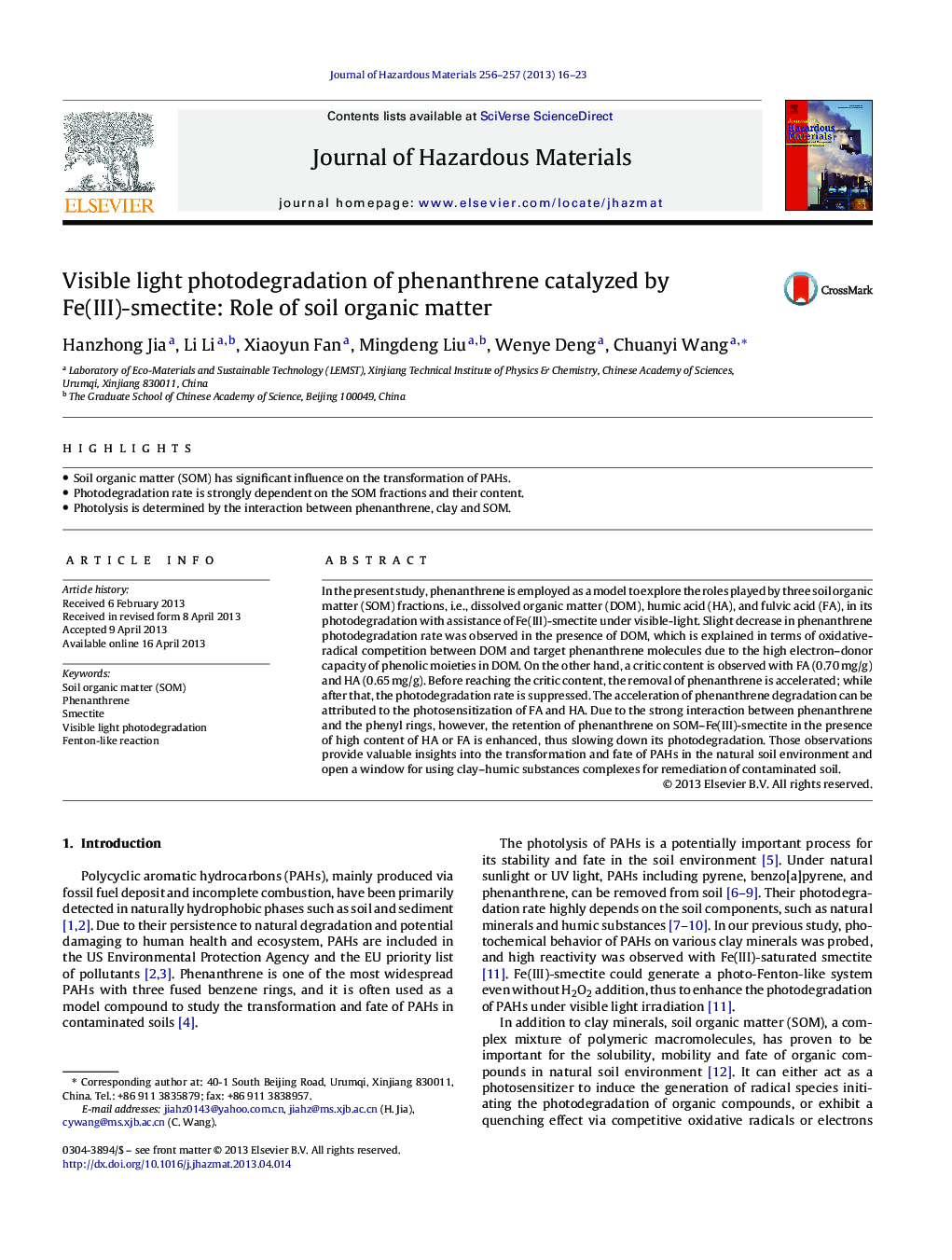| Article ID | Journal | Published Year | Pages | File Type |
|---|---|---|---|---|
| 577287 | Journal of Hazardous Materials | 2013 | 8 Pages |
Abstract
In the present study, phenanthrene is employed as a model to explore the roles played by three soil organic matter (SOM) fractions, i.e., dissolved organic matter (DOM), humic acid (HA), and fulvic acid (FA), in its photodegradation with assistance of Fe(III)-smectite under visible-light. Slight decrease in phenanthrene photodegradation rate was observed in the presence of DOM, which is explained in terms of oxidative-radical competition between DOM and target phenanthrene molecules due to the high electron-donor capacity of phenolic moieties in DOM. On the other hand, a critic content is observed with FA (0.70Â mg/g) and HA (0.65Â mg/g). Before reaching the critic content, the removal of phenanthrene is accelerated; while after that, the photodegradation rate is suppressed. The acceleration of phenanthrene degradation can be attributed to the photosensitization of FA and HA. Due to the strong interaction between phenanthrene and the phenyl rings, however, the retention of phenanthrene on SOM-Fe(III)-smectite in the presence of high content of HA or FA is enhanced, thus slowing down its photodegradation. Those observations provide valuable insights into the transformation and fate of PAHs in the natural soil environment and open a window for using clay-humic substances complexes for remediation of contaminated soil.
Keywords
Related Topics
Physical Sciences and Engineering
Chemical Engineering
Chemical Health and Safety
Authors
Hanzhong Jia, Li Li, Xiaoyun Fan, Mingdeng Liu, Wenye Deng, Chuanyi Wang,
